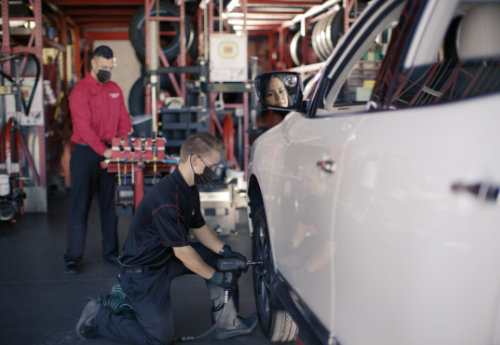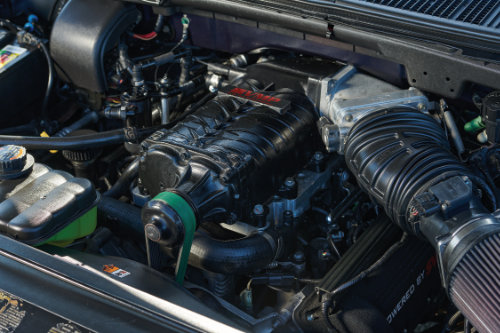4 tire tips for cold weather
Even the most experienced drivers can encounter challenges when driving on slick roads caused by ice and snow or dealing with the impact of colder temperatures during the winter months. In fact, inclement weather and sloppy road conditions are a factor in nearly half a million crashes each winter, according to research by the AAA Foundation for Traffic Safety.

Being safe on the road begins before you even slide into the driver’s seat. When the temperature drops, it’s important to pay special attention to your vehicle’s well-being, including checking the battery, wipers, coolant and other systems. One of your vehicle’s most important safety and performance features that should not be overlooked as winter weather sets in is its tires, which are the only direct link to the road below.
Consider these tips from the experts at Discount Tire to help ensure your tires are ready for winter.
Maintain Proper Pressure
The air inside your tires supports the weight of your car, and as the outdoor temperature drops, so does your tire pressure. For every 10-degree drop in ambient temperature, your tires can lose about 1 pound per square inch (PSI) of pressure. Keep a tire pressure gauge in your vehicle and check your tires at least once a month to ensure they are filled to the vehicle manufacturer’s recommended inflation level, which can be found in the instruction manual or inside the driver’s door. Also, if your vehicle has a spare tire, remember to check its inflation level as well, as it may be different.
Many cars may have been sitting idle due to the pandemic. Activities being cancelled, working from home and more frequent dining in have kept more cars off the roads than usual. However, just because you haven’t been driving doesn’t mean your tires have stayed the same. Tires can still lose air pressure, around 1-2 PSI per month, even if they aren’t being used. Some tires may also vibrate after sitting for a while. These concerns can be solved with a quick tire checkup.
Check Your Tread
Tread depth helps determine a vehicle’s safe stopping distance. You can check your tires’ tread depth by sticking a penny upside-down in one of the grooves. If President Lincoln’s entire head is visible, it’s time to replace your tires to ensure you’re able to stop in time in conditions that typically accompany the winter months.
Invest in Winter Tires
In extreme cold, the tread rubber of all-season or summer tires can stiffen and lose the ability to provide sufficient traction. Winter tires are made from softer rubber to maintain pliability, and the tread design features thousands of extra traction edges for added grip. If you regularly drive in temperatures of 45 F – the same temperature at which you can begin to see your breath – or below, replacing all four tires with winter tires can help provide more control and deliver as much as a 25-50% increase in traction over all-season tires, which could be the margin you need to stop in time or turn to avoid trouble.

Rotate Often
To increase tread life, rotate your tires every 6,000 miles, or earlier if irregular or uneven wear develops. One easy way to remember is to have your tires rotated every other time you have your oil changed.
As you prepare your vehicle for safe winter travel, visit DiscountTire.com for more tips, a personalized tire guide and to find a location near you.
Photo courtesy of Getty Images (Car in snow)







 Windshield Wipers
Windshield Wipers Basic car care is the key to a long-lasting vehicle, improving its safety and dependability, says the Car Care Council. Following a routine maintenance program also makes financial sense since neglected vehicle care almost always means much higher costs down the line in the form of more extensive repairs or lost resale value.
Basic car care is the key to a long-lasting vehicle, improving its safety and dependability, says the Car Care Council. Following a routine maintenance program also makes financial sense since neglected vehicle care almost always means much higher costs down the line in the form of more extensive repairs or lost resale value.


